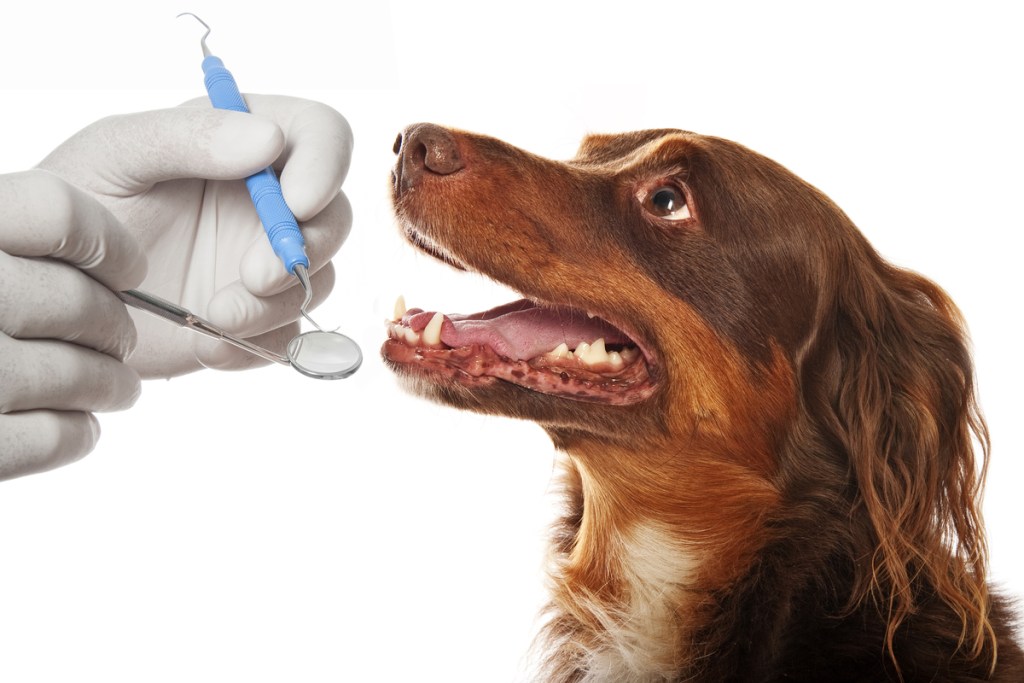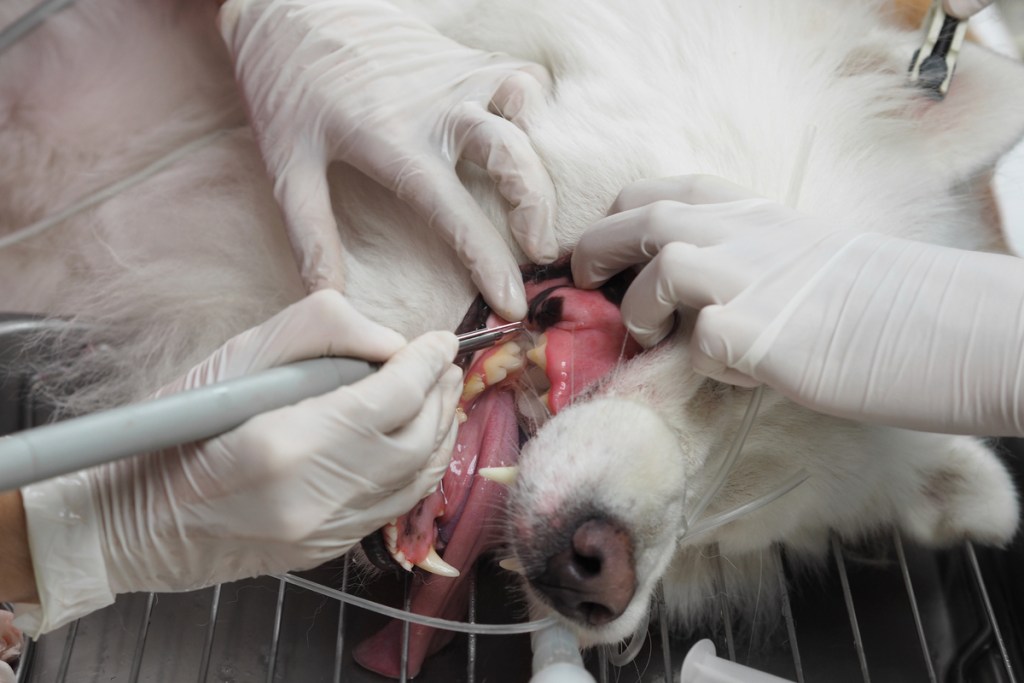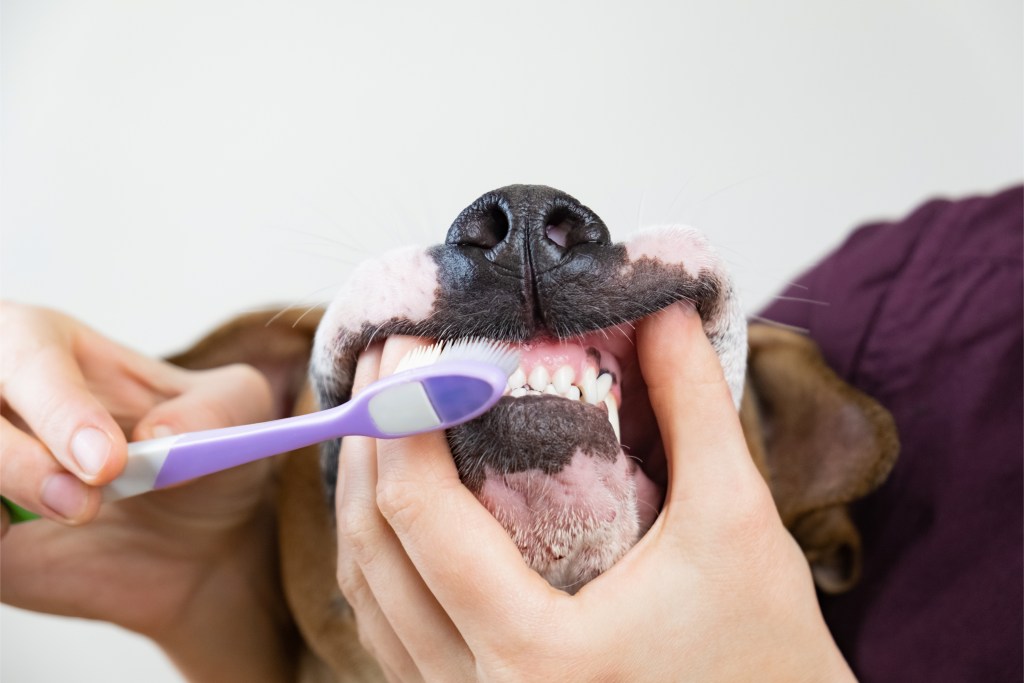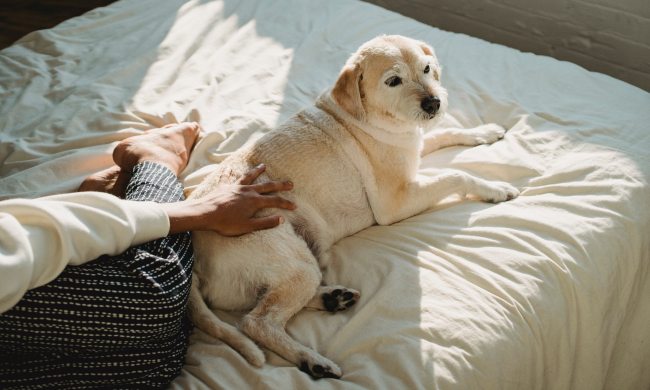
Helping your dog maintain good dental hygiene is an essential responsibility for every pet parent, as it’s an important component of keeping your dog healthy. In fact, canine dental care is as essential as any of the other routine healthcare activities you do for your dog, such as taking them to the veterinarian for routine vaccinations. Neglecting your dog’s teeth could lead to all sorts of medical issues down the road and potentially reduce their lifespan.
Most veterinarians agree that the time to begin taking care of your dog’s dental needs is when they’re still a puppy, but it’s never too late to start practicing good oral hygiene with your dog.
What’s involved with maintaining a dog’s dental hygiene
Maintaining good dental health for a dog begins with brushing their teeth at least several times per week using a toothbrush and enzymatic toothpaste designed specifically for canines. A toothbrush designed for humans is not sized or angled appropriately for dogs, and toothpaste for humans contains fluoride and other additives that are poisonous to dogs and should not be ingested. Canine toothpaste, however, uses enzymes for destroying tartar and plaque, and it comes in flavors, like chicken and beef, that appeal to a dog’s taste buds.
Petlab Co is a company that manufactures and sells a wide range of vitamin supplements, as well as health and dental-related products for dogs, including dental chews, a dental formula water additive, and prebiotic dental sticks.
Chris Masanro, the company’s co-founder, explains, “Human toothpaste is not meant to be ingested and can lead to health problems if swallowed by dogs. Ideally, your dog’s teeth should be brushed daily, but even twice a week can make a big difference in preventing tartar and plaque accumulation. Daily brushing is the key to good oral health. Other products, such as water additives and soft dental chews, can provide additional dental care. The key to long-term success is training and conditioning your dog to allow you to routinely brush and examine your pup’s teeth.”
A dog’s tolerance to having their teeth brushed on a regular basis will vary. To make this process easier, a finger toothbrush can be used instead of a traditionally shaped toothbrush. However, when a dog refuses to cooperate, antibacterial dental wipes are also a viable option to reduce tarter and plaque.
“The best time to start caring for your dog’s teeth is as early in their life as possible. Tartar can begin forming at any age, and it takes just three days for plaque to harden into tartar,” says Dr. Sarah J. Wooten, DVM, CVJ, a practicing veterinarian who specializes in small animal medicine.
Dr. Laura Robinson, DVM, is also a practicing small animal veterinarian and an advisor to Pawp, a subscription-based service that gives pet parents 24/7 online access to veterinarians via telehealth options. She says, “Dogs get all of their adult teeth when they’re around six months old, so between six months and one year old is the time I suggest a pet parent start to focus on their dog’s dental health.”
In addition to the canine-specific toothbrush and toothpaste option, there are countless other products available from veterinarians and pet stores designed to promote good oral hygiene in dogs. One problem, however, is that there are no federal guidelines for canine dental practices, nor regulations about what can be stated in ads for canine dental products.
“Look for canine dental products that are recommended by your veterinarian,” Dr. Wooten says. “For example, I recommend Virbac C.E.T. Enzymatic Oral Hygiene Dental Dog Chews because these work by breaking down plaque that leads to tartar. For this and similar products to work, the dog needs to chew on it for five to 10 minutes, and it will only work on areas of the dog’s mouth where they do their chewing. So, even if you give your dog a recommended dental product, there’s no guarantee it will protect their entire mouth. In most cases, it does not replace the need for regular brushing.”
As for water additives that promote canine dental hygiene by reducing or eliminating plaque and tarter, Dr. Wooten says that she has seen mixed results from these products. “A water additive needs to be used daily, and my experience is that they only work for about 50% of the dogs that use it,” she explains.
Dr. Robinson adds, “Brushing your dog’s teeth on a regular basis is the best thing you can do; giving them periodic dental treats or chews is a good addition, but typically not a substitute. There are many different canine dental products out there. Find products that are backed by legitimate medical research and that come recommended by your vet.”
Consult with your veterinarian before using specific products, like a water additive, dental sticks, or any chew toy designed to improve and protect a dog’s dental health. Be suspicious of a product’s promoting claims that it can replace the need to manually brush your dog’s teeth. Some of these products do work, while others won’t do anything to help protect your dog from future health problems related to dental issues.

Dental care from a veterinarian is also necessary
Even if you brush your dog’s teeth regularly, starting from when they’re a puppy, chances are your veterinarian will highly recommend you periodically pay for a Comprehensive Oral Health Assessment and Treatment procedure, which is referred to by veterinarians as a ‘COHAT.’
According to Dr. Wooten, “This multi-step treatment requires general anesthesia and involves the veterinarian taking X-rays, polishing the dog’s teeth, removing any rotted teeth, treating gum infections and disease, eliminating tartar and plaque, and simultaneously dealing with other dental issues.”
The cost of a COHAT treatment will vary from $600 to $1,500, depending on your location and any additional dental work that needs to be done while your pet is sedated. How often the treatment is required will also vary based on your individual dog’s age and health, so be sure to follow the recommendation of your own veterinarian.
Dr. Robinson recommends pet parents bring their dog to a veterinarian at least once per year for an overall exam, which should include a routine dental exam.
“Regardless of what you do at home, during your dog’s life, at least several times, they will need some more significant dental work done by a veterinarian,” Dr. Robinson says. “The dental care you give your dog at home will lengthen the time between more extensive dental procedures being needed. Unfortunately, dental care, in general, is the thing that dog parents neglect the most because they don’t realize how much of a problem it can become.”
Keep in mind that some pet insurance companies cover the COHAT treatment, either in part or in full. On the plus side, if you maintain your dog’s oral health with regular brushing, the chances of this procedure being medically necessary while they’re still a puppy or even middle age are greatly reduced.
“Understand that a COHAT procedure is very different and much more comprehensive than the basic teeth cleaning service that many dog groomers offer,” Dr. Wooten says. “The teeth cleaning service a groomer offers is just a tooth brushing, which is the same thing pet parents can do at home.”
There is yet another canine dental procedure that’s available in some states. “It includes an anesthesia-free, cosmetic cleaning procedure,” Dr. Wooten explains. “While less expensive than a COHAT, it’s not as comprehensive and is much more traumatic for the dog because they’re awake and uncomfortable for the procedure, which I think is cruel. This is not a service I recommend. There is no cleaning beneath the gum line, it does not address gum infections or loose teeth, and no X-rays are taken, for example.”

Ways to determine if your dog is having dental issues
While your veterinarian will examine your dog’s teeth and gums as part of their annual exam, there are symptoms of dental problems that, as a pet parent, you should be on the lookout for. According to Dr. Wooten and Dr. Robinson, these symptoms include:
- Bad breath
- If your dog suddenly drops food while they’re chewing and then looks confused
- Only chewing on one side of their mouth
- Noticeable discoloration of the dog’s teeth and gums, or loose teeth
- Excessive drooling
- Swelling of the face, often below the dog’s eye
- Discovering blood on your dog’s chew toys (which indicates bleeding of the gums) or a sudden and complete disinterest in chew toys
If you notice any of these symptoms, seeking out treatment from a veterinarian before they worsen is highly recommended. “Dental disease in dogs is very common, and it often leads to a lot of pain and discomfort. For this reason, I believe it’s never too late to begin taking care of your dog’s teeth. Dental infections in the mouth, which grow in pockets on the dog’s gums and beneath their teeth, can lead to bacterial infections elsewhere in a dog’s body,” Dr. Wooten says.
A dog’s heart valves, kidneys, and liver are the most common areas where these bacterial infections wind up, and they can become deadly if not treated early by a veterinarian. These infections also negatively impact a dog’s immune system, and they’re typically painful.
“Don’t allow the cost of dental treatments for your dog to prevent you from having these important medical procedures done. You are negatively impacting your dog’s health if you choose to avoid addressing a disease condition, which could reduce the quality and quantity of your dog’s life. Talk to your veterinarian if you can’t afford a necessary treatment or you’re afraid for your dog to have it. There is no shame or judgment, but there are almost always options,” Dr. Wooten says.
Does a dog’s diet impact their dental health?
There’s some confusion surrounding the concept that what you feed your dog can dramatically impact their dental health, and veterinarians do not all agree on the answer. Some believe that feeding your dog soft (canned) food is not as healthy for your dog’s teeth as hard kibble, while some believe that a raw diet will do the best when it comes to protecting your dog’s teeth and gums.
According to Dr. Wooten, “In my opinion, the type of food you feed your dog does not matter, as long as it’s nutritious and offers a well-balanced diet. How a dog’s teeth and gums respond to food is individual, based on the dog. I can say that my patients that have been fed a biologically appropriate raw diet have some of the cleanest teeth I have ever seen. I am not advocating switching your dog to a raw diet. I am simply stating this personal observation.
“There are kibble-based, prescription diets designed specifically to manage dental issues,” Dr. Wooten adds. “These do work well but should be recommended and prescribed by a veterinarian specifically for your dog. The special kibble’s fibers are designed to clean a dog’s teeth as they’re chewing.”
If you’ve been neglecting your dog’s dental health up until this point, start by having a discussion with your veterinarian about what you should be doing for your dog to prevent dental disease or handle yet undiagnosed dental issues your dog may already be experiencing.



